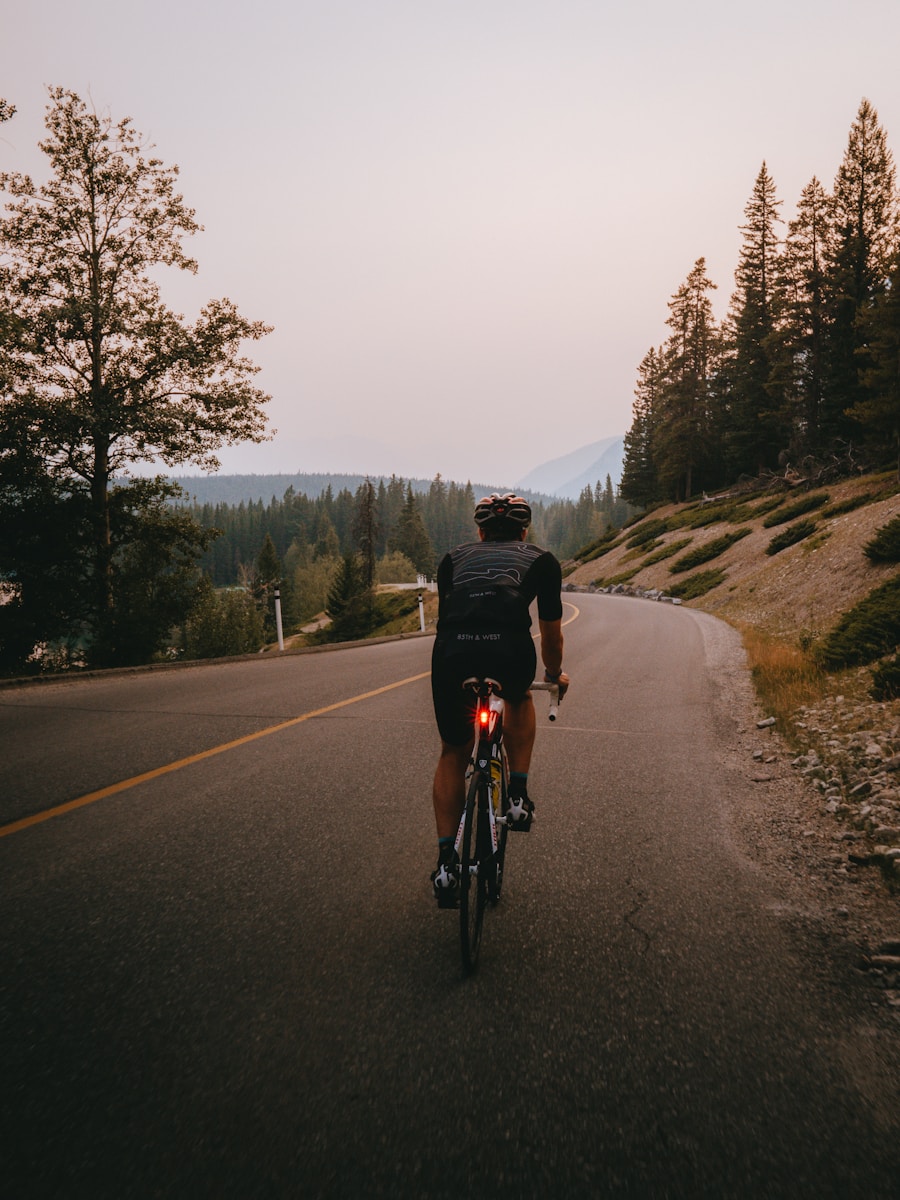💪 SMART FITNESS AFTER 50
Science-backed alternatives for the modern cyclist
Entering your fifties no longer means surrendering ambition on the bike or in the weight room, but it does demand a strategic rethink. After roughly half a century of movement, joints accumulate mileage and the nervous system wires itself to long-standing habits—some forged in the Jane Fonda era, long before modern sports science probed spinal mechanics and cycling efficiency.
🔬 What The Research Shows
This article examines three “legacy” exercises still common in many routines and explains why men over 50 should swap them for safer, performance-enhancing alternatives. Drawing on current research in spine biomechanics, rehabilitation and cycling physiology, you’ll learn how to protect vulnerable tissues, rekindle dormant glutes and unlock fresh watts without inflaming knees or lower backs.
🚫 Exercise #1: The Sit-Up’s Last Stand
Why the classic crunch is outdated
Repetitive trunk flexion may feel nostalgic—who doesn’t remember grinding out burn-inducing sets while MTV played in the background?—but it places enormous compressive and shear forces on lumbar discs. Dr Stuart McGill’s lab at the University of Waterloo demonstrated that thousands of flexion cycles accelerate disc delamination, a mechanism implicated in herniations and chronic lower-back pain.
Men who already log hours bent over handlebars or laptops magnify that risk because their spines live in flexion for large parts of the day.
✅ The power-preserving alternative: The Dead Bug
McGill’s work also shows that a resilient core is one that resists movement rather than produces it. The dead-bug drill—a contralateral limb-lowering pattern performed supine—teaches the deep anterior core and obliques to brace while arms and legs move freely, closely mirroring the spinal stiffness required for efficient pedalling.
🎯 How to perform the Dead Bug:
- Lie on your back, arms reaching sky-high and hips/knees in 90-90 “table-top”
- Slowly extend the right arm behind your head while lengthening the left leg toward—but never touching—the floor
- Pause, exhale, tighten the abdominals, then return and switch sides
- Start with sets of six slow reps per side, building to ten-plus while keeping the rib cage flush to the ground
🚴♂️ Why it matters for cyclists
Stable cores reduce unwanted pelvic rock, allowing glutes to generate torque instead of lumbar muscles fighting saddle-dance wobble. Riders who replace sit-ups with dead bugs often report fewer nocturnal back aches and the ability to stay in the drops longer during tempo efforts.
🚫 Exercise #2: The Perils of the Cold Toe-Touch
The myth of morning hamstring “looseners”
Standing toe touches, especially first thing in the morning, combine maximal spinal flexion with loaded hamstring stretch—conditions prone to ligament strain and disc compression. Clinical reviews from chiropractic and sports-medicine centres warn that the manoeuvre can aggravate pre-existing lumbar pathology or create new irritation in the posterior chain when tissues are still “cold.”
✅ What your hips really need
Men over 50 often feel “tight hamstrings,” but the culprit is frequently dormant glutes and restricted hip extension rather than short hamstring fibres themselves. Dynamic leg swings performed after a gentle warm-up and body-weight squats with a deliberate glute squeeze at the top activate hip extensors while mobilising the joint capsule without aggressive spinal flexion.
🎯 A sample mobility-activation sequence:
- Ten-minute spin or brisk walk to raise core temperature
- Sagittal plane leg swings: 10 controlled reps each side, keeping the torso upright
- Deep air squats: 10 reps; pause at the top to “pinch a coin” between the buttocks for two seconds
- Hip-bridges or mini-band crab walks: 2 × 15 reps for sustained glute firing
🚫 Exercise #3: Rethinking the Heroic Sprint
The temptation
Group rides inevitably end with an adrenaline-filled café-line sprint—and why should the 25-year-olds hog the glory? The problem: ageing connective tissue tolerates less peak load, and many veteran riders develop hamstring or patellar-tendon niggles when they repeatedly surge from the saddle at 1,000 watts and 160 rpm.
✅ Seated neuromuscular accelerations—power minus punishment
An elegant workaround is the progressive seated spin-up. Choose a moderate gear on an indoor trainer or in a safe, flat outdoor stretch. Staying seated, raise cadence smoothly until the saddle almost bounces, then hold the highest controllable rpm for 8–12 seconds before gently bringing it back down—never coasting.
🎯 The Protocol:
Execute three to four rounds after a warm-up twice per week, lengthening the hold phase by two seconds every fortnight. Over four to six weeks most athletes see their top seated cadence climb 10–15 rpm, translating into snappier jumps on the road without the dreaded “rubber-band knees.”
📊 The Evidence At A Glance
| Legacy Exercise | Primary Risk After 50 | Safer Substitute |
|---|---|---|
| Repetitive sit-ups/crunches | Disc delamination; lumbar shear | Dead bug, bird-dog |
| Cold standing toe-touch | Ligament strain; disc compression | Dynamic leg swings + glute activation |
| Out-of-saddle maximal sprint | Patellar & hamstring overload | Seated spin-ups, torque intervals |
🎯 The Bottom Line
Getting older does not mean forfeiting strength or the visceral thrill of a hard ride; it means respecting the physiological realities of multi-decade mileage. By replacing spinal-flexion-heavy crunches with anti-movement staples like the dead bug, swapping risky static stretches for hip-opening dynamic drills and trading ego-driven out-of-saddle blasts for skillful seated accelerations, men over 50 can crank more watts, safeguard lumbar discs and keep hamstrings happier deep into retirement.
The deeper lesson: train movements, not muscles; quality, not quantity; and nervous-system finesse, not brute repetition. Embrace progressive loading, warm tissues before demanding mobility, and let the glutes—those often-dormant engines—do their evolutionary job of propelling the body forward while sparing the spine.
🚀 Your Next Steps
Commit to four weeks of the substitutions outlined above, track how your back feels getting out of bed and how your cadence control sharpens on group rides. Chances are you will not only feel younger and more bullet-proof—you might just outsprint the twenty-somethings to the latte queue without ever leaving the saddle.
Keep smiling, keep spinning, and remember: wisdom is the ultimate performance enhancer.




As a 54-year-old who’s been cycling for 30 years, this hits home hard! I’ve been doing those exact sit-ups since the ’80s and wondering why my lower back has been giving me grief lately. The dead bug exercise sounds intriguing – definitely going to give it a try. Quick question though: how often should I be doing these dead bugs? Daily or just on training days?
Great question, Mark! For someone transitioning from traditional crunches, I recommend starting with dead bugs 3-4 times per week on your easier training days. The beauty of this exercise is that it’s gentle enough for daily practice once you’ve mastered the movement pattern. Start with 2 sets of 6 per side, focusing on perfect form rather than reps. As your core stability improves over 2-3 weeks, you can increase to daily practice. Listen to your body – if you feel it working the deep stabilizers without back strain, you’re on the right track! 🎯
I appreciate the research citations, but I’m a bit skeptical about abandoning exercises that have worked for decades. I’m 52 and still crushing it with traditional ab work and aggressive stretching. That said, I have noticed some stiffness in the mornings lately… Maybe there’s something to this. Can anyone share their actual experience switching from crunches to dead bugs? Did you really notice a difference in cycling performance?
James, your skepticism is totally understandable – I felt the same way initially! I’ve been coaching cyclists for 15 years and made this transition with my athletes around 2018. The key insight is that traditional ab work often creates more spinal flexion, which we already get plenty of on the bike.
Actual performance difference: My athletes typically report better power transfer and less fatigue in the lower back during long rides within 6-8 weeks. One client increased his 40K TT power by 12 watts just from improved core stability – no other training changes. The morning stiffness you mention is often the first thing to improve. Worth trying for 4 weeks? 💪
This article is spot on! I’m 49 but my husband is 53 and has been struggling with exactly these issues. He switched to the seated spin-ups about 6 months ago after a hamstring injury from sprinting out of the saddle. The difference is remarkable – he’s actually gotten faster in our local group ride sprints and hasn’t had any more hamstring problems. The dynamic warm-up routine mentioned here is also a game changer. We both do it before every ride now. Thanks for breaking down the science behind what works! 🚀
Linda, thank you so much for sharing your husband’s success story! This is exactly why I wrote this piece – real riders getting real results by making smart training adjustments. The fact that he’s gotten FASTER in sprints while staying injury-free perfectly demonstrates that these aren’t just ‘safe’ alternatives, they’re actually performance enhancers. Your adoption of the dynamic warm-up as a team shows how these principles work for cyclists of all ages. Keep up the great riding! 💪🚀
Really comprehensive article! As a physical therapist who works with older athletes, I completely agree with these recommendations. One question about the seated spin-ups: for someone recovering from a previous hamstring strain, should they avoid these entirely until fully healed, or can they be incorporated early in the rehab process at very low intensities? Also, are there any specific contraindications for the dead bug exercise? I have a few clients with hip replacement history.
Excellent questions, David! For hamstring strain recovery, I typically introduce seated spin-ups in the late-stage rehab phase (weeks 3-4) but only after pain-free cycling at moderate intensities. Start with 50-60% max effort and very short holds (3-5 seconds). The key is no ballistic movement – smooth acceleration only.
For hip replacement clients with dead bugs: generally safe but modify the range of motion. Keep the leg movement to 45 degrees max and avoid any hip flexion beyond 90 degrees. I often start with arms-only variations first. Always defer to the orthopedic surgeon’s specific movement restrictions. Great to connect with another PT in this space! 🚑